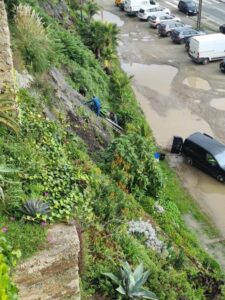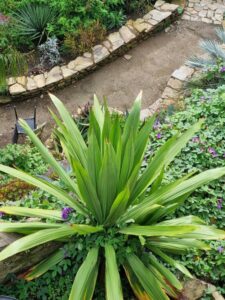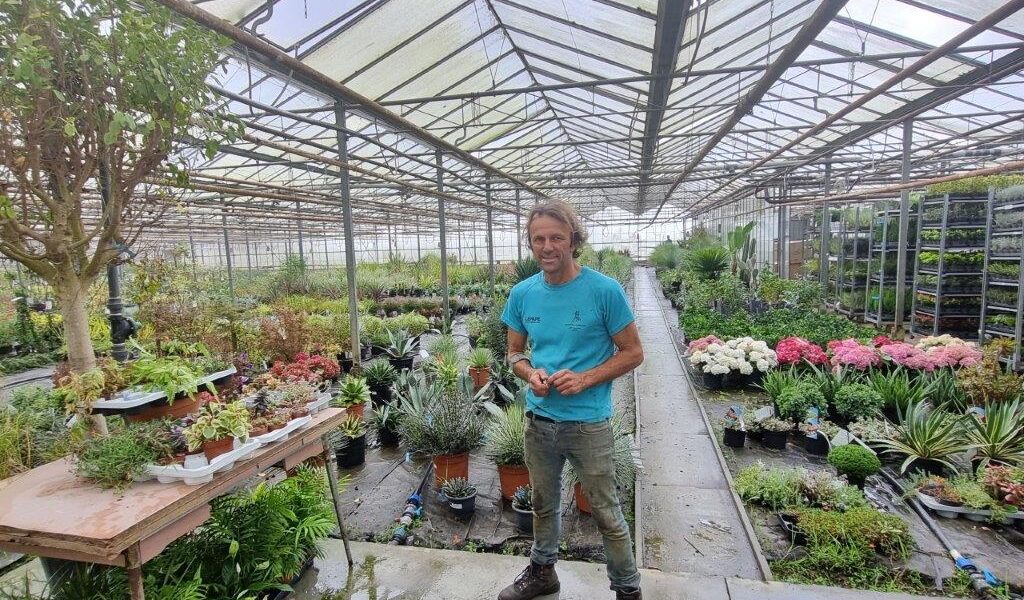Future-proofing our plantings
By Patrick Regnault
Unsettled weather patterns driven by climate change is affecting plant selection. Plants that we once thought to be thriving are now affected by warmer temperatures as well as highly variable and unpredictable precipitation. This is already affecting existing plants in a diverse manner whilst also causing problems in adapting new plants to these conditions. Added to that is the spread of plants too ready to adapt and escape. We, as horticulturists, need to think and share our knowledge more than ever before.

On my recent travels to Brittany in France I had the pleasure to talk to Dominique Dirou, from Fleurs du Leon in Plouenan, about the challenges faced in his area that are linked to global warming. Dominic supplies, and plants, the traditional range as well as new lines from warmer climatic zones.
Heathland plants, once the staple of gardens in the region, are now struggling with the heat that reaches the high 20s and even mid to high 30s for extended periods, as well as unusually dry periods. On the other hand, newcomers such as nerium, olea, diospyros, dicksonia and many more, suffer from unseasonal drying winds in early spring.
Dominique understands the benefits of traditional cultural practices of helping/improving soil biomass that favours plant health and improved resilience. We shared our own tips and recipes gained from ancestral knowledge but as he said, too many horticulturists have lost or never gained that understanding which will lead to more failures in landscaping, and may reduce greatly the number of horticulturists in the long term.

The next garden I visited opened my eyes to the drastic climatic changes horticulturists in coastal Northwestern Brittany are trying to deal with. The Jardins Extraordinaires de Brest is situated on the cliff of the port city. Designed, built and maintained by passionate volunteers with a strong background in landscaping, nursery and other aspects of ornamental horticulture, the gardens are designed to push the limits of plant acclimatisation. The mostly frost-free south facing cliffs have become home to over 2000 plants from various parts of the warmer climes of the world. The planting started in 2019 and has thrived. Alocasias and colocasias are looking sensational, Ceiba speciosa is 3m tall and surviving winters, plants from Northern Queensland such as the Agapetes meiniana (also known as Paphia meiniana) are loving the site, and Doryanthes palmeri are clumping at a fast rate. New additions from Australia, just planted or waiting to be, are Araucaria bidwillii, Araucaria cunninghamii, Brachychiton populneus, B. rupestris, B. discolor as well as Archontophoenix cunninghamiana and A. alexandrae. Stranger still, the inground Cymbidium orchids and mandevilla were flowering – plants that were once strictly indoor plants. A deep understanding of climatic zones, micro-climates, plant requirements, and a willingness to learn by trial and error make this garden a very unique one which will require an article of its own.

I mentioned the Brest Gardens as it is an example of horticulturists understanding the challenges that are facing us. They did not wait for government bodies to act. They made a plan, sought suitable land, explained their ideas and got started. Changes are coming and it will be very fast, we can wait and try to adapt at the last minute or be prepared to experiment to increase our plant palette.
What I have learnt from those two encounters is that on one hand we need to use, learn or relearn traditional horticultural methods from our area and other places. Those methods can be adapted to gardens and smaller lots. It is not about living in the past but to learn from it. On the other hand, we need to be bold – trial and error is how it all started after all. We need to understand the land, the climate, and the various micro-climates we have within a small parcel of land. We need to be aware of the changes we observe in our practice and the direction it is likely to take so that we can build a solid but not rigid foundation for future gardens.

It is time that our voices, as on-the-ground horticulturists, be heard and listened to. Bypassing the political sphere, we need to educate the public directly with a strong, fearless and independent language. There is no need to dumb down the message. People are not stupid, but simply uninformed by choice or lack of opportunities. We need to be proactive in our communication and method of delivery. We need the foresight and the imagination – we cannot afford the business-as-usual or that the powers-to-be will act in the interest of us all, because they will not.
Patrick Regnault FAIH RH0062
Interactive Landscapes
E: patrickregnault@hotmail.com
Main photo: Dominic Dirou had to broaden his plant palette to adapt to a changing climate (Image: Patrick Regnault)

